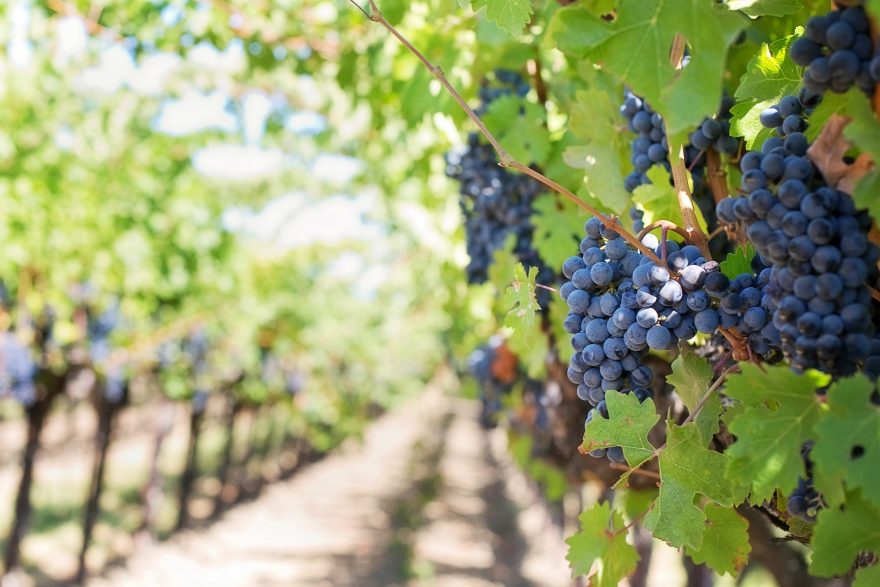
How is Wine Made? A Brief Overview of the Wine-Making Process
Wine is one of the most celebrated alcoholic beverages, drunk by people all across the world. However, many of us lack the understanding of what goes on behind the scenes and the extensive effort that goes into producing a bottle of wine.
If you are curious about how wine is made, continue reading as we outline the five core stages of wine production.
1. Grow and harvest grapes
When the grapes are ripe, they are harvested either by machines or by hand. Machines are the more time-efficient method for harvesting grapes, particularly in modern times. Grape harvesting machines work by shaking the grapes off from their stems and collecting them as they fall.
That being said, in steeper areas, or vineyards which are difficult to access, or where labour is cheaper than investing in a machine, winemakers often choose to harvest the grapes by hand.
It is important to note that the method of grape picking has little effect on the overall quality of the wine.
2. Crushing grapes
Wineries tend to check and discard unwanted leaves and bad grapes on long conveyor belts. The good grapes are selected and are usually destemmed to minimise the tannins.
Destemming the grapes can also help decrease temperatures during the fermentation process, and potentially reduce the alcohol levels. After the grapes have been destemmed, they are crushed and ready for fermentation.
It is, however, becoming more common for winemakers to ferment with whole clusters of grapes. Fermenting grapes with the stem can add more tannins and acidity, which can lead to the wine having a fresher and more vibrant character.
3. Fermentation
In winemaking, fermentation is the process in which grape juice is turned into alcohol. During fermentation, the yeast culture turns the sugar that’s present in the grape juice into ethanol and carbon dioxide. There are a variety of different yeast strains that either occur naturally or are added to control the flavour of the wines.
Typically, red wines are fermented at warmer temperatures of around 20 – 32 degrees, while white and rose wines are fermented at cooler temperatures of around 12 – 22 degrees. Moreover, red wines are generally fermented until the yeast culture has consumed all the sugar, which results in a drier wine.
In red wine production, the grapes are fermented in a large, open vessel with their skin attached, to produce a deep, red colour. As well as adding colour, the skin of grapes increases the tannin content and adds a distinct flavour to the red wine.
During white wine production, the grape’s skin is removed before fermentation. Most people think that white wines are only made from white grapes, but in fact, many quality white wines are made from skinless black grapes.
In rose wine production, winemakers need to have control over the colour of the wine. The grapes are initially fermented with their skin, but once the juice has created a slight red hue, it is pressed and transferred to another tank. Before the fermentation process can continue, the skin of the grapes must be removed, which gives the rose wine its pinkish colour.
4. Maturation
The next step in the winemaking process involves the maturation stage. For the wine to mature and develop complex flavours, it is placed into separate vessels.
Maturation periods vary depending on the winemaker’s motive. Some winemakers age their wine for at least five years or more, while others only age for several months, so they can be consumed straightaway.
Inexpensive wines are usually matured in stainless-steel tanks, but there are many premium wines which are matured in oak barrels, to enhance and create smoky flavours. The vessels of old oak barrels are porous so that oxidation can occur – this allows oxygen to dissolve into the wine and soften the tannins, which results in smoother tasting wine.
5. Fining, filtering and bottling
After the maturation stage, the wine undergoes a process called fining. Fining clarifies and removes any unwanted particles which are present in the wine – it is usually done with minerals like egg white, bentonite or gelatine.
Once the wine is purified, the fining minerals are then filtered out. The wine is poured into the disinfected wine bottle after determining its size and shape. Lastly, before the wine is bottled, a layer of gas is added to the top of the wine to preserve it.
If you’re a wine enthusiast who is looking to extend your wine collection, we have a wide range of high-quality wine racks solutions to suit any space. For further assistance regarding our bespoke wine rack services, contact us today.